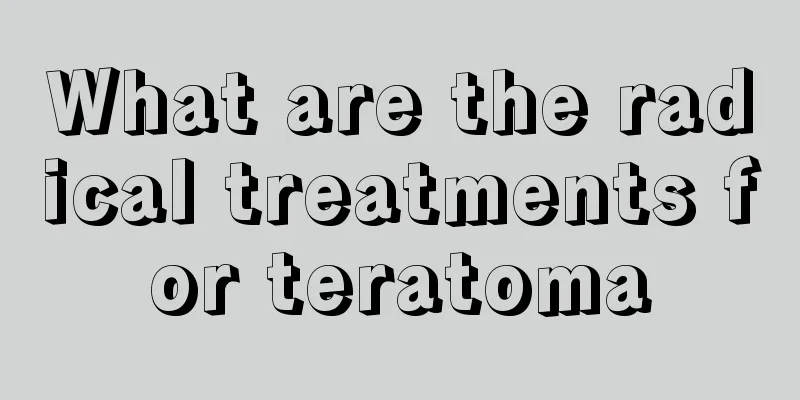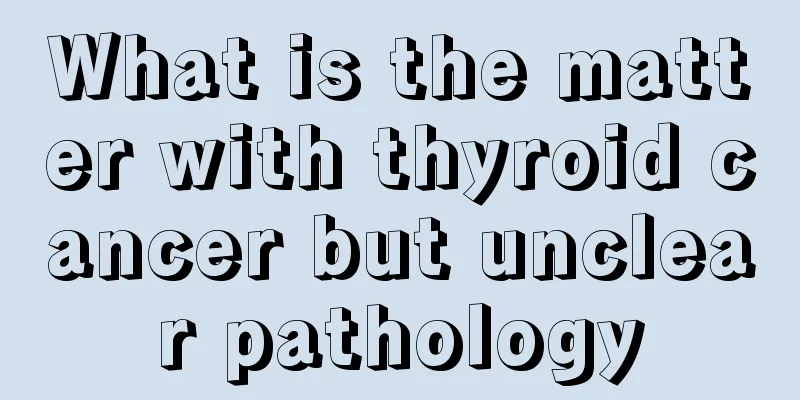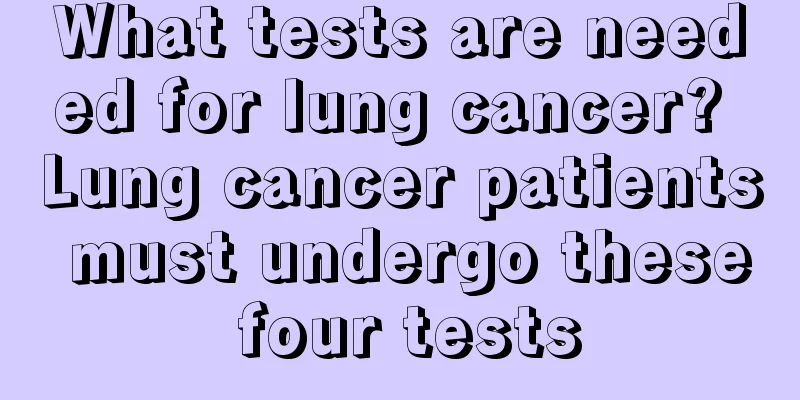What are the radical treatments for teratoma

|
No matter what kind of disease it is, once it comes, it will overshadow our lives, and teratoma is even more so. Experts say that since it is a tumor disease, we are well aware of the harm it causes, so we must put its treatment first. Next, let's take a look at the radical cure methods for teratoma. What are the radical treatment methods for teratoma? 1. Surgical treatment Once a teratoma is diagnosed, surgery should be performed as soon as possible. For cases diagnosed with malignant tumors (a tumor is an abnormal lesion formed by the loss of normal regulation of the growth of a cell in a local tissue at the genetic level under the influence of various carcinogenic factors, resulting in its clonal abnormal proliferation.), chemotherapy should be performed before surgery to create conditions for elective surgery. 2. Chemotherapy For mixed teratomas, only chlorambucil (CI, B) can be used, at 0.1 mg/(kgd) orally for 12 weeks. For malignant teratomas, chemotherapy should be given after surgical resection. Commonly used chemotherapy regimens are as follows: ① POMB/ACE alternating therapy: POMB regimen: vincristine (VCR) 1.5 mg/m2, intravenous injection, day 1; methotrexate (MTX) 100 mg/m2. Intravenous drip (lasting 12 hours), day 1; calcium folinate (CF) rescue, 15 mg, once/12 hours, days 2 and 3; bleomycin (BLM) 10-20 mg/m2, intravenous injection (lasting 24 hours), day 3; cisplatin (DDP) 60 mg/m2, intravenous drip, day 4; 2 weeks as a course of treatment. ACE regimen: etoposide (VP16) 100mg/m2, intravenous injection, days 1 to 5; actinomycin D (ACD) 0.45mg/m2, intravenous injection, days 3 to 5; cyclophosphamide (CTX) 500mg/m2, intravenous injection, day 5; 2 weeks as a course of treatment. After POMB2 courses, PONfB and ACE are used alternately. The total course of treatment is 1 year. DVB regimen: DDP 20mg/m2, intravenous injection, days 1 to 5; vinblastine (VLB) 0.15-0.2mg/kg, intravenous injection, days 1 and 2; BLM 10-20mg/m2, intravenous injection, days 1, 8, and 15. Every 3 weeks is a course of treatment. After 4 courses of treatment, surgery was performed, and CA chemotherapy was given after surgery: CA chemotherapy: CTX 500 mg/m2, intravenous injection, day 1; doxorubicin (ADR) 50 mg/m2, intravenous injection, day 1. For patients with residual tumor, 10 times/3 weeks; for patients without residual tumor, 5 times/3 weeks. 3. Immunotherapy Transfer factor, 1-2 times a week, 1 vial each time. Or use short anaerobic bacteriocin at the same time, starting from 0.1ml/time, once a week, increasing by 0.1ml each time, until 2ml/time, for 2 years. 4. Radiation therapy Currently, the instrument is used in cases of malignant teratomas with microscopic or macroscopic residuals. 5. Intracranial teratoma Benign teratomas can only be removed surgically, but it is important to emphasize the three-dimensional multi-point sampling of pathological specimens to avoid missing the malignant components. If the tumor can be completely removed, it is expected to be cured. Since the tumor is often located in the midline, it is difficult to completely remove it surgically. If it cannot be completely removed, cerebrospinal fluid shunt surgery can be performed as appropriate to relieve obstructive hydrocephalus. Radiotherapy and chemotherapy are ineffective for benign teratomas. For immature and malignant teratomas, chemotherapy is performed first and then radiotherapy. If the tumor has not disappeared after reexamination, surgical resection is performed, and chemotherapy is continued for 2 courses after surgery. 6. Gastric teratoma Gastric teratomas are mostly benign and have a good prognosis if removed surgically early. Long-term follow-up is required after surgery, and AFP should be checked regularly. If there is no decrease or if it increases after a decrease, it indicates recurrence or metastasis, and further treatment is required. 7. Testicular teratoma Surgery is the first choice for the treatment of testicular teratoma. For children with testicular teratoma, testicular preservation surgery can be considered if the AFP level is normal, B-ultrasound shows the presence of normal testicular parenchyma, and intraoperative frozen pathology examination results exclude malignant tumors. Patients with testicular dermoid cysts and testicular teratomas in children do not need other treatment after surgery. Radical orchiectomy plus retroperitoneal lymph node dissection is performed for postpubertal testicular teratomas with retroperitoneal lymph node metastasis. The vast majority of teratoma metastases are consistent with the pathological type of the primary lesion, but embryonal carcinoma components are also found in teratoma metastases. The malignant components in distant metastatic teratomas are not well responsive to chemotherapy regimens for germ cell tumors. 8. Ovarian teratoma (1) Treatment principles The treatment principles of immature ovarian teratoma are: surgical principle, adopting surgical methods that preserve fertility; after surgery, effective combined chemotherapy should be adopted as soon as possible. For recurrent tumors, different specific plans should be formulated based on the rules of reversal of the malignancy of immature teratoma and combined with different specific situations. (2) Surgical treatment ① Scope of surgery Most tumors are unilateral, and patients are often very young. It is often recommended to perform unilateral adnexectomy to preserve fertility. If the patient has no fertility requirements and the tumor is stage II or III, bilateral adnexes and hysterectomy can be performed. The greater omentum is a common site of metastasis. Regardless of the early or late stage of the tumor, the greater omentum is resected. There is no consensus on whether the retroperitoneal lymph nodes should be routinely removed. For patients with extensive abdominal metastasis, tumor cell reduction surgery should be performed as much as possible to achieve basic tumor removal. ② Surgical treatment of recurrent tumors Recurrent tumors of immature teratomas are still mainly surgically removed, supplemented by effective combined chemotherapy. ③ Secondary exploratory surgery is not currently recommended. (3) Chemotherapy Chemotherapy is an essential treatment for immature ovarian teratoma. After the initial surgery, early use of combined chemotherapy can prevent recurrence and improve survival rate. Do you all know the above explanation on how to treat teratoma? I hope that teratoma patients can treat their teratoma according to their own condition to avoid teratoma affecting their body or having incurable consequences. Moreover, when treating teratoma, patients must relax and accept treatment. For the treatment of teratoma, surgery is still the main option, and removing the tumor before it spreads is the best treatment strategy. Therefore, timely detection of teratoma is very critical. I hope you can understand the importance of this point and learn more about the external manifestations of teratoma to ensure that you can detect its existence in time. |
<<: What are the hazards of teratoma
>>: How much does the surgery for right ovarian teratoma cost?
Recommend
Do you know about cutaneous sarcoidosis?
Cutaneous sarcoidosis is often ignored because it...
Does cervical cancer cause stomach pain?
Does cervical cancer cause stomach pain? Patients...
Why is durian flesh hard
If the durian flesh is hard, it means it is not f...
Postoperative care precautions
Everyone must want to know what we need to pay at...
What to do if your butt is severely sagging
In life, many people often sit for long periods o...
How to eat Spirulina? It turns out this is how it is eaten
Spirulina is a relatively common health food with...
Can spinal cord disease be cured? What should you pay attention to in your daily diet
The human spinal cord may be diseased due to cong...
What should not be taken with iron supplements?
It is best to choose iron supplements. Not only c...
Can liver cancer be cured in the middle stage? How to treat liver cancer in the middle stage?
Mid-stage liver cancer refers to the number of tu...
How to talk about love skills to make the relationship last longer
For those who have no experience in love, especia...
Can applesauce remove spots?
If a person has spots on his face, his skin will ...
How long does it take for menstruation to come after cesarean section?
After giving birth by caesarean section, mothers ...
This is how coronary artery stenosis should be treated!
Coronary artery stenosis is a cardiovascular and ...
What is the impact of early pregnancy on rectal cancer
Every woman wants to be a mother. And these are a...
Tips to relieve headaches
Headache is a very common problem. Once a headach...









